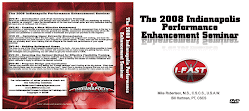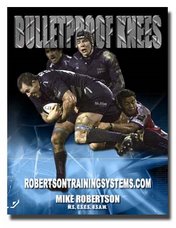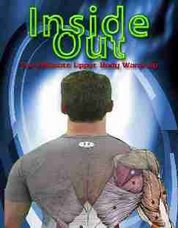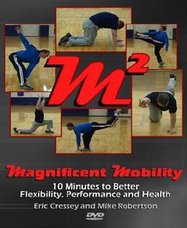For those of you who follow professional football you've no doubt heard about Shawne Merriman; he's quite possibly one of the most dynamic defensive players in the league. (Just understand that it pains me to say that considering he plays for the Chargers, but I digress).
In case you've missed it, Shawne had off-season surgery to repair torn cartilage in his knee, but hadn't felt good in camp. He recently had 4 surgeons evaluate him and tell him that he needs reconstructive surgery because he has torn the PCL and LCL ligaments in his knee. Obviously, this would effectively end his season.
However, no one said that young men think about the long-term; Shawn has gone against the docs recommendations and decided against surgery even though he risks a "career-ending injury." So how could he possibly play in this state? Let's take a quick step back to examine how we create stability around our joints.
In your joints, you have what are called active and passive stabilizers. The passive stabilizers include cartilage structures (menisci in your knee, labrum in your shoulder, etc.), ligaments, and joint capsules. They are passive in nature because they don't contract and relax like muscles do. In essence, they just kind of keep things in place.
In contrast, your muscles are active stabilizers - you can use them to contract and improve stability around a joint. In the case of your knee the primary active stabilizers include the hamstrings, adductors, gluteals, and quadriceps.
So what happens when you tear two of the four ligaments in your knee? First off, you become very unstable - you've essentially lost half of your passive stability. If you asked for my opinion, I would tell you that he's assinine for trying to play. I have an infininte amount of respect for playing through the pain and giving yourself to your team, but I definitely worry about the long-term ramifications of doing so. With that being said, however, what could he do from a training standpoint to make it through the season?
The answer, my friends, is to get his active stabilizers as strong as possible. The stronger he gets his glutes and hamstrings to help him declerate, the better off he'll be. He still may not make it through the season, but it will at least give him a fighting chance. Another option would be a serious sized brace to help re-create some of the lost stability. Now keep in mind we don't know the severity of his tears, but I would assume you're looking at least grade 2 (partial thickness) if not grade 3 (full thickness) tears if all 4 docs want him to have surgery.
If you're interested in learning more about the anatomy and function of your knees, along with how to keep them healthy, be sure to pick up a copy of my Bulletproof Knees manual. Your knees will thank you.
Stay strong
MR
BTW - Can I give myself a virtual high-five for coming up with an entire blog post that consists of one single thought? Gooooooooooooooooo me!







No comments:
Post a Comment